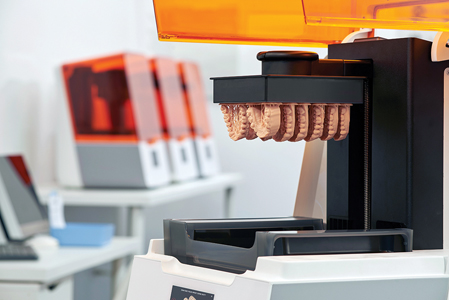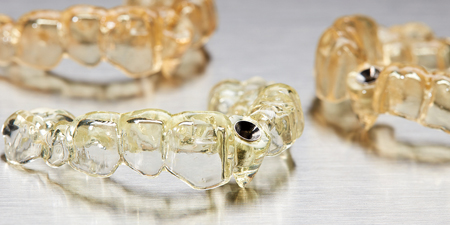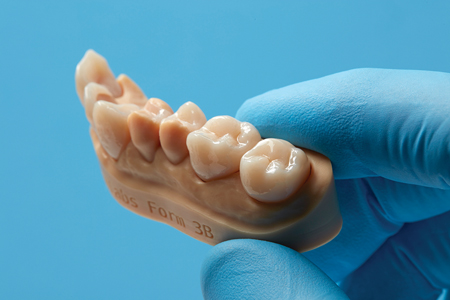When I discovered CAD/CAM technology more than 10 years ago, I was amazed at the technological world that I was entering. It was novel and it was creative; but it was also rather daunting. My student years had provided some abstract images of various scanners and milling machines that were available at that time, but no actual cases employing these technologies. Once I graduated, the systems were far too expensive for the small office where I was practicing initially.
After I made the decision to purchase a complete in-office system, I discovered an exciting new world, one that I could not have imagined previously. As suggested, I allowed myself a comfortable learning curve at the beginning, starting with easy cases, gradually gaining experience and familiarity with the process, until I was confident enough to push for more. CAD/CAM systems have evolved rapidly, and during the past 10 years I have been witness to an accelerated evolution of three generations of scanners and milling machines. Today, I would not even consider opening a new office without, at the very least, a scanner, and preferably, a complete in-office CAD/CAM system.
I remember that when I explained the benefits of CAD/CAM technology to my patients a decade ago, I could not help wondering what lay ahead for dentists, and where the future of the profession would lead us.
As I look at the rapidly developing field of 3D printing, I get the same game-changing feeling that I had when I first discovered CAD/CAM technology. The mainstream dental 3D printing boom began in 2015, following important technological milestones such as the first dental 3D printing in 2000, digital impressions for an analog world in 2005, and the introduction of all-ceramic restorations and desktop scanners in 2010.
There are 3 distinguishable types of 3D printing that can be categorized from a technological perspective:1
- Photopolymerization with thermoset plastics. A thermosetting polymer, resin, or plastic is a polymer that is irreversibly hardened by curing from a soft solid or viscous liquid prepolymer or resin. Curing is induced by heat or suitable radiation and may be promoted by high pressure or mixing with a catalyst. It is also known as Stereolithography, and commonly referred to as SLA. (Fig. 1)
- Laser sintering with both for metals and thermoplastics is an Additive Manufacturing process that belongs to the Powder Bed Fusion family. A laser selectively sinters the particles of a polymer powder, fusing them together and building a part, layer-by-layer. It is known as Selective Laser Sintering and commonly referred to a SLS or SLM. Laser sintering is very expensive, with high maintenance costs, but delivers amazing results.
- Extrusion is a 3D printing process that uses a continuous filament of a thermoplastic material. It is known as Fused Filament Fabrication or Fused Deposition Modeling and commonly referred to as FDM. This technology is based on feeding a modelling filament through a heated nozzle, and printing layer by layer. While very affordable, FDM’s accuracy and service quality are quite limited with respect to dental applications.
Fig. 1

Various companies utilize differing photopolymerization technology categories:
- SLA – Stereolithography printing exposes the liquid resin to a laser light source.
- LFS – Low Force Stereolithography can be described as SLA’s successor. It uses a flexible tank and linear illumination to polymerize liquid resin.
- DLP – Digital Light Processing exposes the liquid resin to a DLP projector light source.
- LED – New technology that uses LED instead of laser light sources for the additive manufacturing of metal parts and optimizes 3D metal printing.
However, the underlying principle is the same: a polymerizing light hardens the resin to a solid-state layer by layer. DLP or LED techniques offer faster results, while SLA and LFS modes provide smoother and finer details, but the process is significantly slower.
There are numerous dental applications for 3D printing.2 In fact, there are many applications that are not possible without 3D printing (aligner thermoforming models, indirect bonding trays). 3D printing can enhance traditional techniques such as surgical guides, custom impression trays, diagnostic models, splints, restorative models, and provisionals. And there are novel 3D printing opportunities such as full dentures and permanent indirect and direct restorations. (Figs. 2-4)
Fig. 2

(Courtesy of Formlabs Dental).
Fig. 3

Fig. 4

In my daily practice I find many situations where 3D printing allows me to offer existing services more predictably and rapidly. Currently available options include: provisional crown and bridge restorations, inlays, onlays and veneers.
The ability to print splints represents a tremendous advantage; a reliable in-house splint can be completed in a single appointment whereas sending the case to a dental laboratory is far less efficient and much more expensive. The routine use of rapidly printed surgical guides improves the patient’s perception of surgical procedures, speeds treatment, and assists in predictable results for every case. 3D in-house printing reduces the waiting time before surgeries.3
In the past, it was extremely difficult to treat totally edentulous patients with significant bone loss. Ultimately, the limitations of dentist-technician communications made the process long and tedious, and results were often less than satisfactory. It was also frustrating that during this time-consuming ordeal the patient had no access to provisional dentures. 3D printed full dentures, available the same day, offer a practical solution to both patient and dentist. Scanner, 3D printer and an in-house technician are the ideal.
As with any new technology, 3D printing has a learning curve. It is highly recommended that the practitioner begin with simpler procedures, and then tackle more complex ones as experience and confidence are accumulated. 3D printing technology is a game changer in the dental industry that will greatly influence and modify patient treatment in the years to come.
3D printing, taken together with CAD/CAM and CBCT, creates a comprehensive shift to digital dentistry, a trend that is rapidly redefining the dental profession.
Oral Health welcomes this original article.
References
- Introduction to dental 3D printing: how to start and what to consider, Sam Wainwright, formlabs.com
- How 3D printing has transformed dental care, Digital International Magazine of Digital Dentistry, Vol. 1, Issue 4, p 42-43Ramonaite
- ImmediateTeeth in Fibulas: Planning and Digital Workflow With Point-of-Care 3D Printing Journal of Oral and Maxillofacial Surgery, 78, Issue 8, p 1320–1327 Published online: April 14, 2020 Fayette C. Williams, Daniel A. Hammer, Todd R. Wentland, Roderick Y. Kim
About the Author
 Dr. Florin Lazarescu is President of the European Society of Cosmetic Dentistry (ESCD) and founder and corporate director of the Society of Esthetic Dentistry in Romania (SSER), and Editor-in-Chief, DTI Romania. Dr. Lazarescu is author of Immersion in Esthetic Dentistry and Comprehensive Esthetic Dentistry (Quintessence) and numerous articles. His esthetic practice in Bucharest focuses on all-ceramic and implant restorative procedures.
Dr. Florin Lazarescu is President of the European Society of Cosmetic Dentistry (ESCD) and founder and corporate director of the Society of Esthetic Dentistry in Romania (SSER), and Editor-in-Chief, DTI Romania. Dr. Lazarescu is author of Immersion in Esthetic Dentistry and Comprehensive Esthetic Dentistry (Quintessence) and numerous articles. His esthetic practice in Bucharest focuses on all-ceramic and implant restorative procedures.
RELATED ARTICLE: 3D Printing in Your Office: Better Outcomes in Minimal Time












